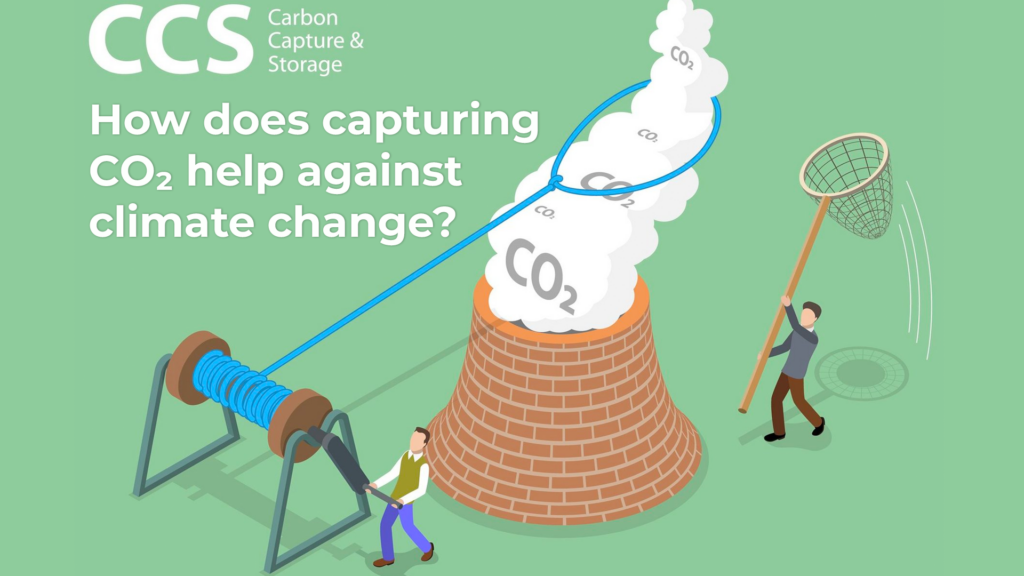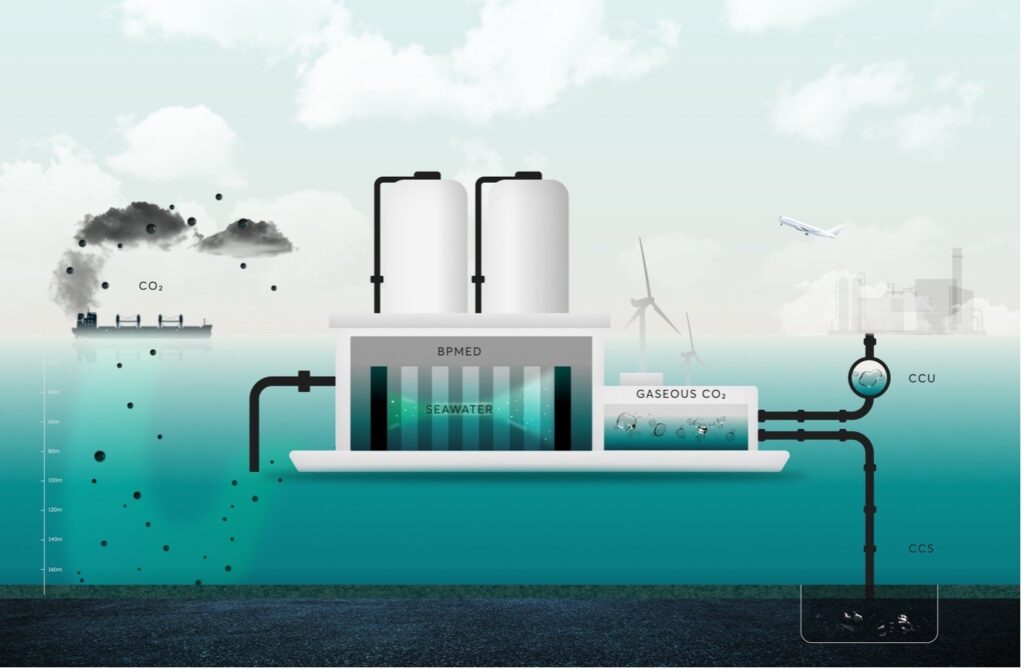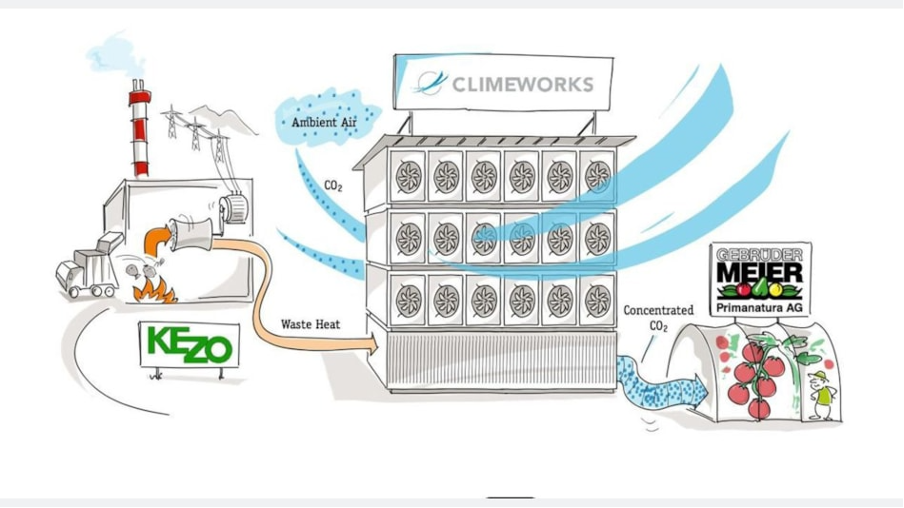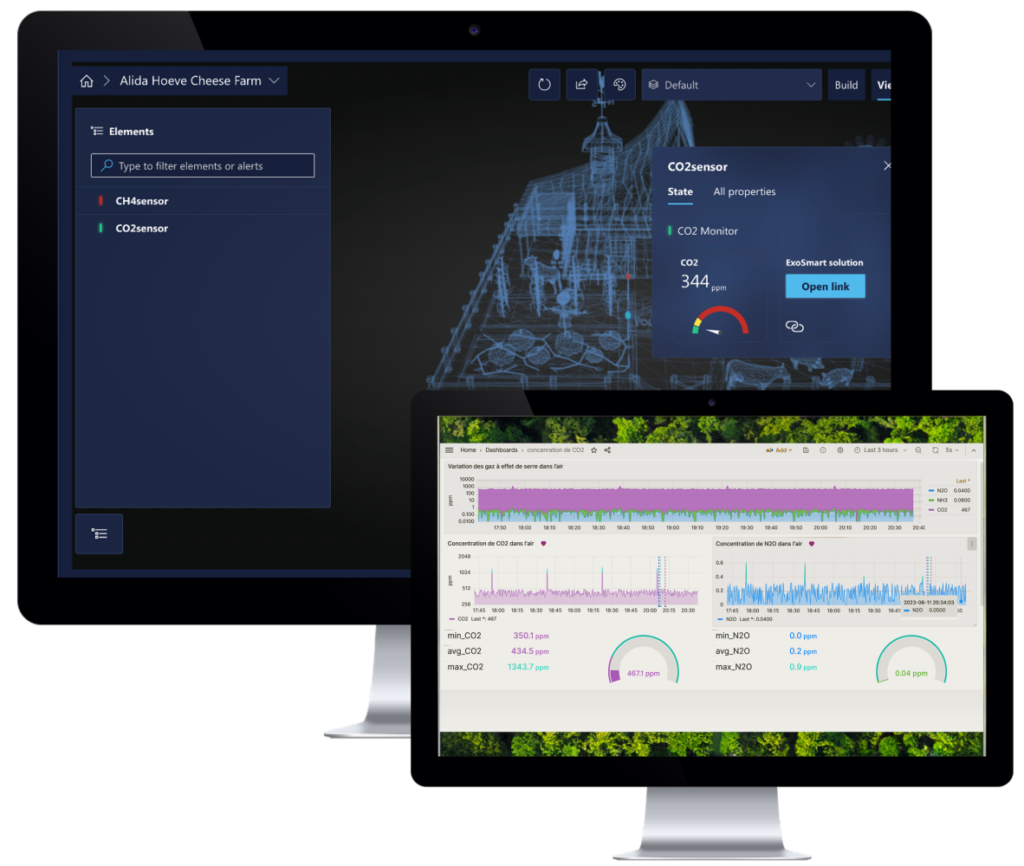
Many industrial processes, like burning fossil fuels, and agricultural practices such as fertilization and livestock farming, release substantial amounts of carbon dioxide and other greenhouse gases into the atmosphere. This emission of CO₂ is a major contributor to climate change, leading to ongoing efforts to devise methods for capturing CO₂ and storing greenhouse gasses.
Article by: Robert van Mölken
As the COP28 is getting closer and closing it more and more clear that the Earth’s climate is changing at an alarming rate, primarily due to the excessive release of greenhouse gases (GHGs) into the atmosphere. Carbon dioxide (CO2), methane (CH4), and nitrous oxide (N2O) have emerged as the prime culprits, propelling global warming and unsettling our climate balance. In response to this existential crisis, we find ourselves at a crossroads: it is no longer sufficient to solely reduce GHG emissions; we should emphasize the critical nature of collecting and securely storing these gases. This article looks at the role that carbon collection and storage play in our efforts to mitigate climate change.
Mitigating Climate Change
As the Earth’s temperature continue to rise, approximately 1.2 degrees Celsius since the pre-industrial era, we see more and more natural disasters happing; including heavier storms, forest fires and earthquakes (even due to natural gas extraction, e.g., Groningen, The Netherlands. To prevent catastrophic consequences, global leaders, such as the ones coming together at the Africa Climate Summit 2023, have aimed to limit global warming to well below 2 degrees Celsius, as outlined in the Paris Agreement.
Key lifesaver
In many EU countries the amount of GHGs need to be reduced by 50% to reach the Paris Agreement goals and passively reducing the emissions is not going to be enough. Experts see that collecting and storing CO2 and other GHGs can be a pivotal tool in achieving this goal, also called Carbon sequestration. Partly is goes naturally by trees, plants, and sea organisms (e.g., sea wheat and microscopic see vegetation), but it will not be able to make great difference. Because where one tree on average takes 25 kilo of CO2 out of the air, a country like The Netherlands emits 168 megaton of CO2.
Carbon sequestration can occur through various natural and artificial processes, and it plays a vital role in reducing the net emissions of greenhouse gases. Let’s go over some of the most promising solutions; Carbon capture and storage (CCS) technologies and plants that contribute to carbon sequestration, biodiversity support, and sustainable land management.
Carbon capture and storage (CCS) technologies
CCS technologies, for example, can capture CO2 emissions from industrial processes and power plants before they enter the atmosphere. This captured CO2 can then be stored underground in geological formations, preventing its release into the air. Implementing CCS technologies on a large scale can significantly reduce CO2 emissions, helping to slow down global warming. Let’s take a closer look at SeaO2 and Climeworks and their importance in mitigating climate change.
Harnessing Ocean Resources (SeaO2)
SeaO2 is a technology that aims to capture CO2 from the atmosphere by using the vast and natural carbon storage capacity of the world’s oceans. It leverages the ocean’s ability to absorb and store carbon through a process known as ocean-based CCS. The concept behind SeaO2 involves stimulating the growth of phytoplankton, tiny marine organisms that absorb CO2 during photosynthesis.

SeaO2 involves deploying nutrient-rich solutions in specific oceanic regions to promote the growth of phytoplankton. As these organisms photosynthesize, they draw down CO2 from the atmosphere and store it in their biomass. Phytoplankton eventually die and sink to the ocean floor, where they can be stored for extended periods. This process mimics nature’s carbon cycle, which has stored vast amounts of carbon in the deep ocean over geological timescales. SeaO2 has the potential to be a sustainable carbon removal strategy that aligns with the protection and conservation of marine ecosystems.
While SeaO2 shows promise as a scalable carbon capture and storage solution, it is still in the early stages of development and faces various technical and environmental challenges, such as the potential for unintended consequences on ocean ecosystems.
Direct Air Capture Technology (Climeworks)
Climeworks is another innovative technology that focuses on direct air capture (DAC) of CO2 from the atmosphere. Unlike traditional CCS systems that capture CO2 emissions from point sources like power plants, DAC technologies like Climeworks can capture CO2 directly from the ambient air.

Climeworks employs modular units equipped with specialized sorbent materials that capture CO2 when air is passed through them. Once saturated, the sorbents release the CO2, which can then be collected and stored. Their DAC technology is versatile and can be deployed in various locations, making it suitable for both industrial and urban settings. The captured CO2 can be used for various purposes, including carbon utilization processes such as carbonating beverages, enhancing greenhouse crop growth, or producing synthetic fuels.
Climeworks has made significant strides in DAC technology and is actively contributing to carbon removal efforts. However, it currently requires substantial energy inputs, which can be mitigated through the use of renewable energy sources to power the capture process.
Natural carbon sequestration
There is of course also a natural way of capturing and storing carbon. Natural carbon sequestration occurs through various processes and in different types of ecosystems. Below are some of the natural methods where humankind can help a hand.
Extend wetland ecosystems
Wetlands, such as marshes, swamps, and mangroves, are highly effective natural carbon sinks. The dense vegetation in wetlands captures and stores significant amounts of carbon, and the waterlogged conditions slow down decomposition, allowing carbon to accumulate in the soil over time.
Forest, Reforestation and Afforestation
Forests are some of the most significant natural carbon sinks on Earth. Trees capture CO2 through photosynthesis and store it in their woody biomass. Forest ecosystems include tropical rainforests, temperate forests, boreal forests, and more, each with varying carbon sequestration capacities. That why planting trees in deforested or degraded areas and restoring forests through reforestation and afforestation initiatives can enhance natural carbon sequestration enormously.
Conservation Agriculture
Sustainable farming practices, including no-till farming and cover cropping, can improve soil health and increase soil carbon sequestration. In no-till farming, the soil is left undisturbed, and crops are planted directly into the residue or organic matter from the previous crop. Where cover cropping is the practice of planting specific crops (cover crops) during the off-season or alongside primary crops to cover and protect the soil.
Carbon collecting and storing plants
One perfect alliance with technology-based carbon collections and storage methods is the Silphie, also known as Silphium perfoliatum or cup plant, is a native North American perennial plant known for its unique qualities that make it a promising ally in the fight against climate change.

- High Biomass Production: Silphie boasts rapid growth and can produce substantial amounts of biomass. Its towering stems and large leaves capture sunlight efficiently, converting it into organic matter.
- Deep Root System: Silphie’s extensive root system enhances its ability to access water and nutrients from deep in the soil. This deep-rooted nature also contributes to soil stability and carbon sequestration.
- Carbon Sequestration: Like all plants, Silphie captures CO2 from the atmosphere during photosynthesis, storing carbon within its tissues. Additionally, the plant’s organic matter, including leaves and root exudates, enriches the soil with carbon.
Measuring Carbon Footprint and unlock Certification using ExoSmart®
ExoSmart® stands as our innovative IoT and Blockchain software platform, meticulously designed to empower farmers. It provides real-time insights, actionable data, and tools to optimize practices while minimizing carbon emissions, in line with green-deal requirements. With ExoSmart®, precision monitoring allows for carbon footprint control, utilizing IoT sensors for accurate CO2e emissions data collection. This data empowers effective actions for reducing carbon footprints.
Furthermore, ExoSmart® enables the creation of a digital twin—a virtual replica—of farms and fields, offering seamless integration of sensor data, precise mapping, and in-depth analysis. Scenario simulations within this digital realm enhance resource allocation optimization.

The platform leverages satellite maps for real-time farm visualization, facilitating not only status overviews but also hotspot identification, land usage monitoring, and areas of concern pinpointing, ensuring sustainable farming practices.
Ultimately, ExoSmart® seamlessly integrates with our blockchain platform, guaranteeing data integrity and immutability for IoT data. This integration fosters trust among stakeholders and unlocks carbon certification, validating unwavering commitments to environmental sustainability.
Conclusion
In conclusion, our world finds itself at a pivotal moment in the battle against climate change. The Africa Climate Summit 2023 and global efforts underscore the urgency of addressing greenhouse gas emissions and their impacts on our planet. By adopting a multi-faceted approach, encompassing innovative technologies, natural solutions, and sustainable practices, we have the means to combat climate change effectively. Collecting and securely storing carbon is not just a necessity; it’s our key to safeguarding the future of our planet and all its inhabitants.
#ClimateChange #CarbonCapture #CarbonSequestration #Sustainability #GreenTech #CarbonFootprint #Biodiversity #CircularEconomy #CarbonNeutral